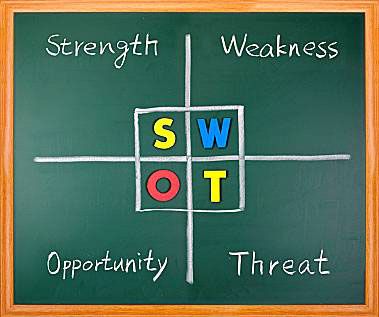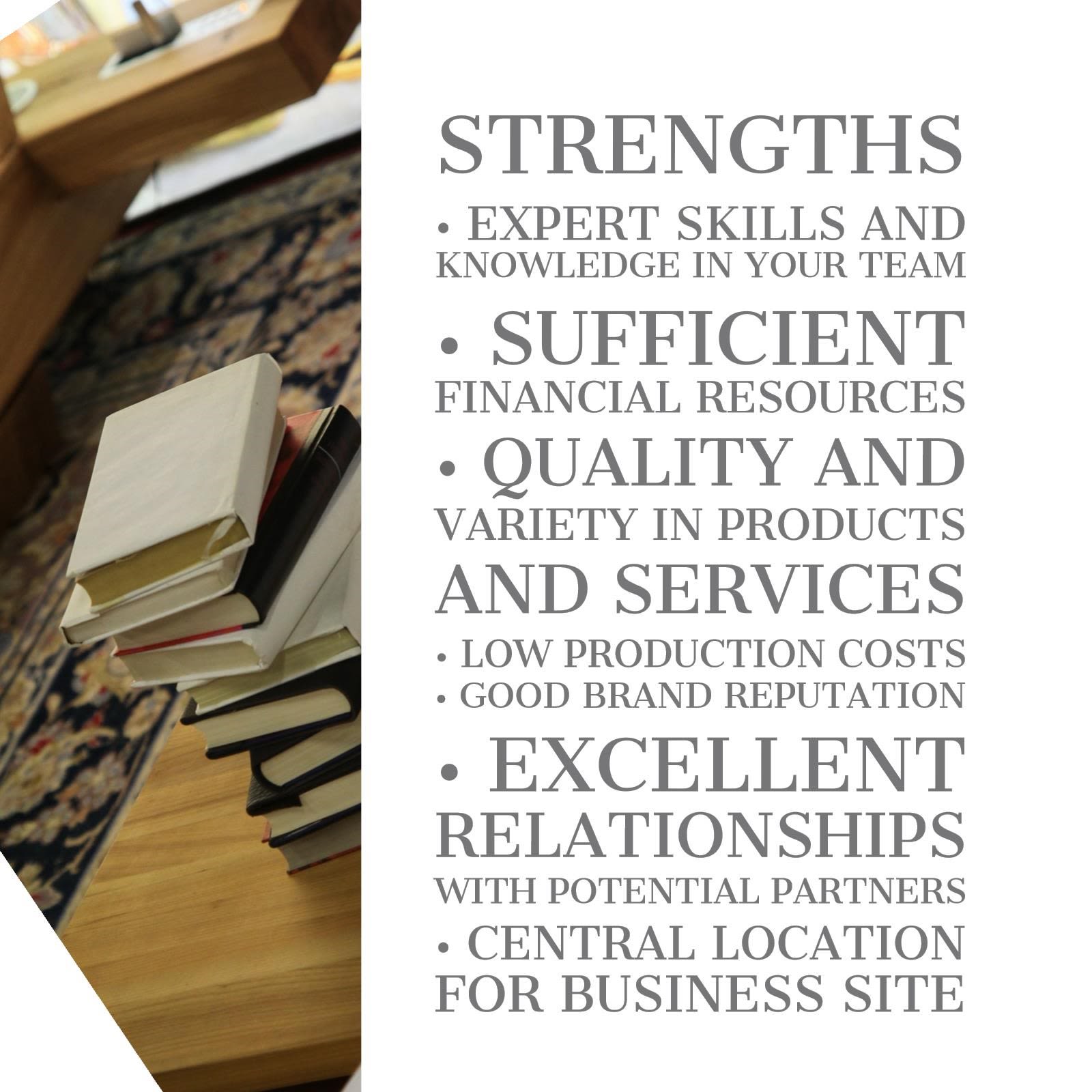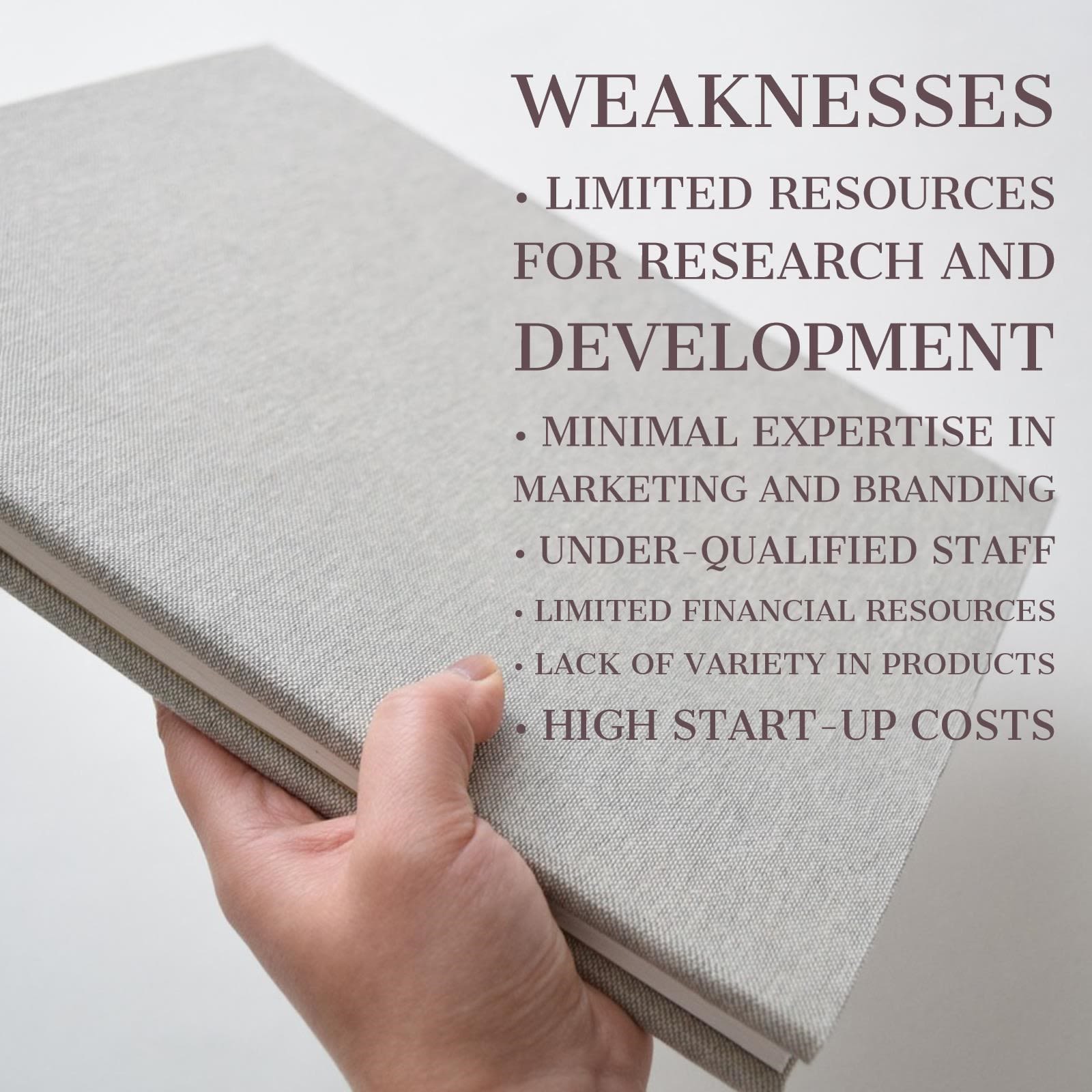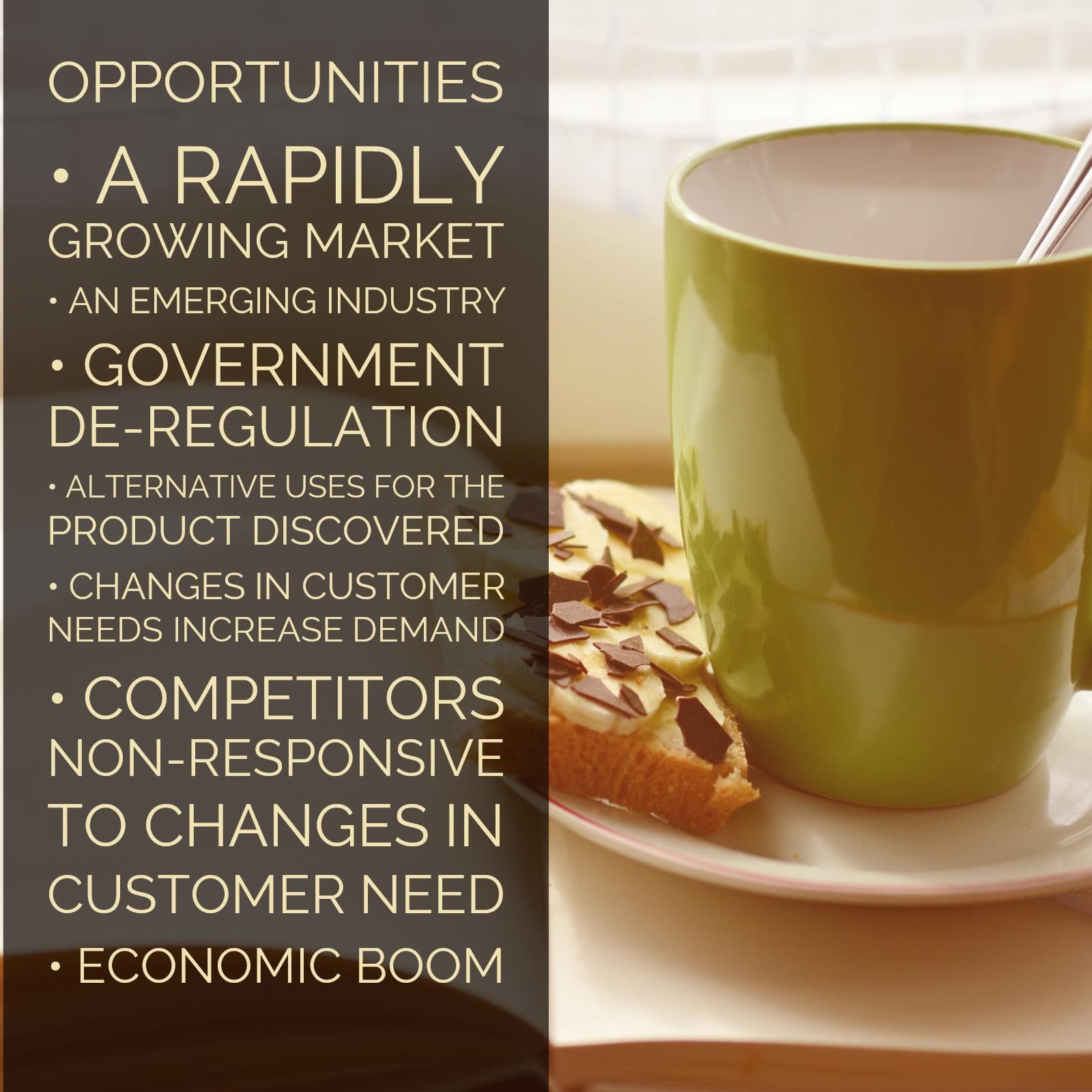SWOT Analysis:
Business Planning
Experiential Education

Introduction
SWOT is an acronym for Strengths, Weaknesses, Opportunities and Threats. It is a business planning tool that is widely used to explore and understand factors that can compromise or enhance the chances of success. The tool was first developed by Albert Humphrey from Stanford University in the 1960’s and 1970’s. The diagram below is a simple visual representation of a SWOT analysis.

The SWOT is an analysis technique that is used to examine products, services and markets. It is used to help decision makers share ideas and work out a common purpose for a project or enterprise. The SWOT enables an understanding of the important factors related to success and failure, and highlights what matters need to be managed immediately or prioritised. It helps you to identify and better understand resources and capabilities.
The core aim is to explore internal factors that either increase or compromise achievement (i.e. strengths or weaknesses) and external factors that either increase or compromise achievement (i.e. opportunities or threats).

Strengths are Positive Internal Factors
Strengths are the internal factors that increase your chances of achieving set objectives. So, what are the ‘internal’ advantages your business or team may have over others in the industry? What are aspects or capabilities that benefit your business? The poster below provides some examples of potential strengths.

Weaknesses are Internal Factors that Compromise You
Weaknesses are the internal factors that compromise your chances of achieving set objectives. So, what types of characteristics within your business put you in a situation of disadvantage in comparison to other businesses? What factors hinder growth and ability to reach goals and standards? The poster below provides some examples of potential weaknesses.


Opportunities are Positive External Factors
Opportunities are the external factors that increase your chances of meeting your objectives. So, what factors exist in the environment that increase your chances of success/greater profits? How can your organisation benefit from the current conditions arising, for example, from the market, competition, technology, industry or government? The poster below provides some examples of potential opportunities.

Threats are External Factors that Compromise You
Threats are the external factors that compromise your chances of meeting your objectives. So, what environmental threats exist that are beyond your control but might place you at risk of reaching your goals? What factors could create problems for profitability and reliability? What external conditions could compromise stability or survival?


The Relevance of the SWOT Analysis for this Subject
In the coming weeks, you will be asked to examine your organisation’s strategic and operational plans. And, to then consider - How might a SWOT analysis, as it relates to your job and your team, help you to:
1. Better position yourself to increase the chances of achieving organisational objectives
2. Increase value to the customer experience
3. Enhance your own wellbeing and that of your team
4. Maximise the talents and skills of all in your team to resolve problems and test possibilities
We therefore recommend students review the resources and templates below and start thinking about these questions. As part of this subject, students may demonstrate their understanding of how to apply theory to practice by completing SWOT analysis templates or other business planning and problem solving tools/templates and then uploading them to their Professional Portfolio as additional ‘evidence’.
To access a range of templates for SWOT analysis please follow the links below:
To Access a checklist/student guide to completing a SWOT analysis please click below:

References
SWOT Analysis, Strategy Skills Team FME, 2013, accessed on 23rd April, 2017, from: <http://www.free-management-ebooks.com/dldebk-pdf/fme-swot-analysis.pdf >.
Management Study Guide 2012, accessed on 22nd April, 2017, from: <http://www.managementstudyguide.com/
>.
Slide Shows, Project Smart and Entrepreneur Magazine, accessed on 22nd April, 2017, from:
<
https://www.slideshare.net/gunjs1/swot-analysis-27003882
>.
<https://www.slideshare.net/gunjs1/swot-analysis-27003882?next_slideshow=1 >.
<https://www.projectsmart.co.uk/swot-analysis.php >.
<https://www.entrepreneur.com/sa >.

